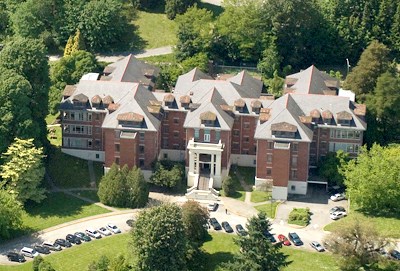The Editor,
Re. “The future — or the destruction — of Riverview?” (Green Scene, The Tri-City News, Jan. 8).
Can we just build, please, and skip destroying first in order to build?
First, we have the example of mayors and councils permitting perfectly serviceable and affordable rental buildings to be razed for unaffordable ones in the name of higher density around our priceless and overpriced SkyTrain hubs. Sure, there’s more of them, but how do they serve the lower-income population who can’t afford to move into them? Net gain for that group: zero.
And now, after an obviously faked consultation with the public — and that gets me angry because I bothered to participate in every stage — here comes the destruction of the perfectly sound Valleyview building on Riverview lands, along with other existing functional facilities to serve the disabled and addicted in Burnaby, in order to make way for a “state of the art” hospital, providing a net gain of — wait for it — 17 new beds. Let’s do the math: $175 million, 17 new beds for our mentally ill. It boggles the mind.
We learn in passing that apparently we cannot fund more affordable rental apartments or mental health services without first stuffing the pockets of developers, who, make no mistake, are the only true beneficiaries of this whole process.
The underlying goal regarding the treatment of mental illness, soon to be unveiled as the so-called motive behind the real estate bonanza on the stunning Riverview lands, is the “new” model of community-centred care for the mentally ill.
But the issue isn’t that community-based services don’t work. Apart from the fact that there aren’t nearly enough of them, the issue is that there are many severely mentally ill people who require other kinds of services and that Riverview was and is the ideal location for them.
The issue isn’t that we don’t want a caring community to surround our mentally ill, it is that when we invest in such spiffy, shiny state of the art, world-class, etc. facilities, we are in fact taking away money from where it’s really needed.
And just as bad in this case, it’s also that we are doing this at the expense of a true work of art, carefully built up by our thoughtful forebears: the arboretum. Now that is world-class and it also once served a deep need among the long-term patients housed on these grounds well before developer cats were let loose among the pigeons in this province by our previous and current government.
No, the real issue is that we should be getting a far bigger bang for our buck.
In sum, we are destroying something that is good, very good, for something that looks better but serves far fewer people, all for large sums of money benefiting only a select few.
It’s a party in B.C. if you’re a developer, or one of their high-placed friends, but a tragedy for the thousands of mentally ill who will still be roaming our streets and pining in jails long after the Riverview dust settles.
Felix Thijssen, Coquitlam
••••••••
The Editor,
The entire Riverview lands should be dedicated in perpetuity for psychiatric and addiction services, including education, training and research. It should become a mecca for the world with respect to every facet of enlightened mental and emotional health care.
The payoffs for this would be vast, many and long-term. Government and taxpayers are well aware of the costs, in mega-dollars and grief, that now burden our society because of inadequate and poorly managed mental/emotional health issues. The majority of B.C. voters wouldn’t begrudge spending the money required to have a showcase facility working to solve these dire problems, for B.C. and beyond.
This provincial government spent, for example, $24 million on variable-speed-limit signs on 30 km of highway where the 120 km/h speed limits are proving treacherous. It spent $20-million-plus on a suicide-prevention fence on the Ironworkers’ Memorial Bridge. These and many other projects weren’t required to pay for themselves, so why can’t Riverview be kept as a site that would have farther-reaching and much more significant benefits than “little” $44-million, fully taxpayer-funded investments in public safety and well-being.
For the government and BC Housing to demand that all but a few new institutional beds on the Riverview lands break even on a project-by-project scale is head-shakingly disingenuous and short-sighted. The use of the full Riverview site needs to be put to all B.C. taxpayers and voters in a referendum, or at least made a prominent 2017 election issue, rather than decided by a very limited and controlled “visioning” process with an essentially preordained, market-driven outcome.
Brenda Guild Gillespie,
Salt Spring Island



